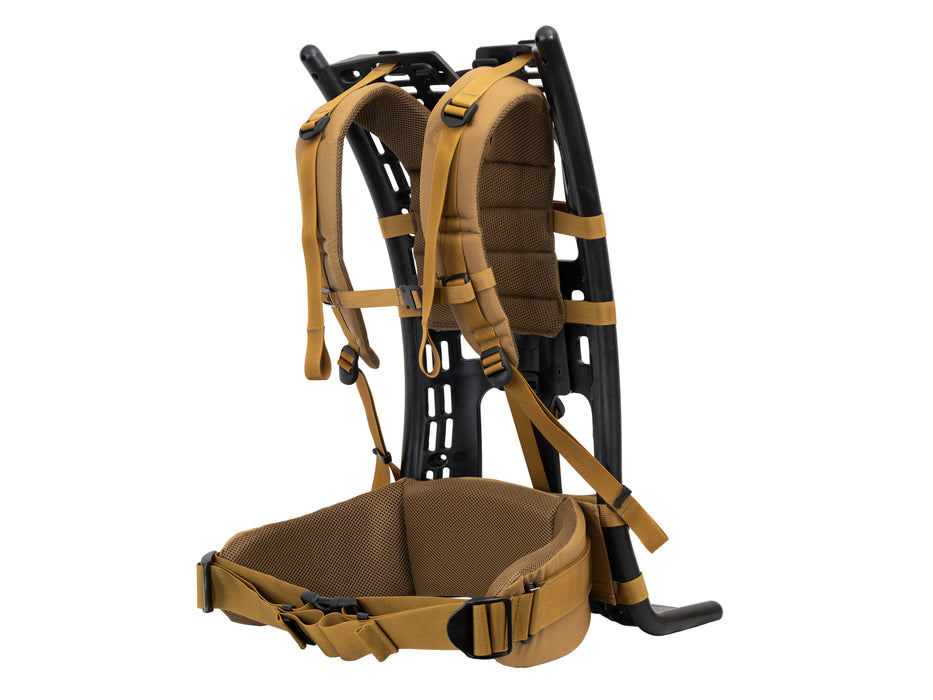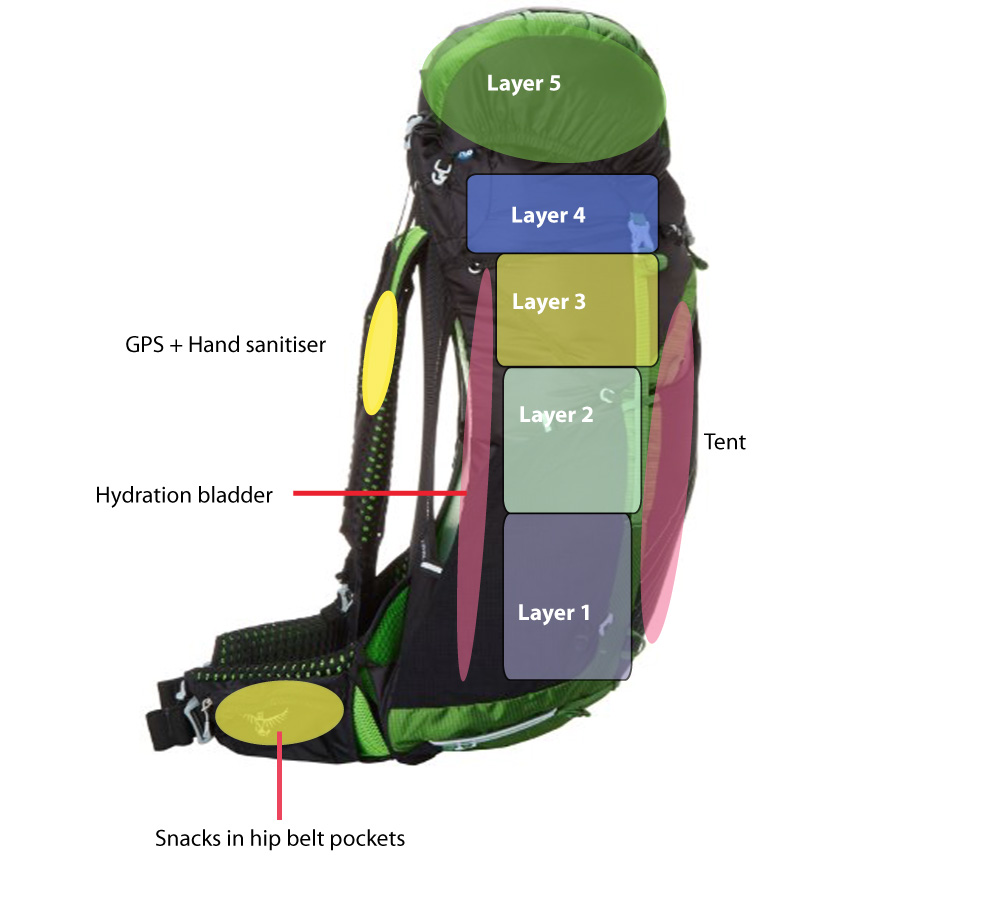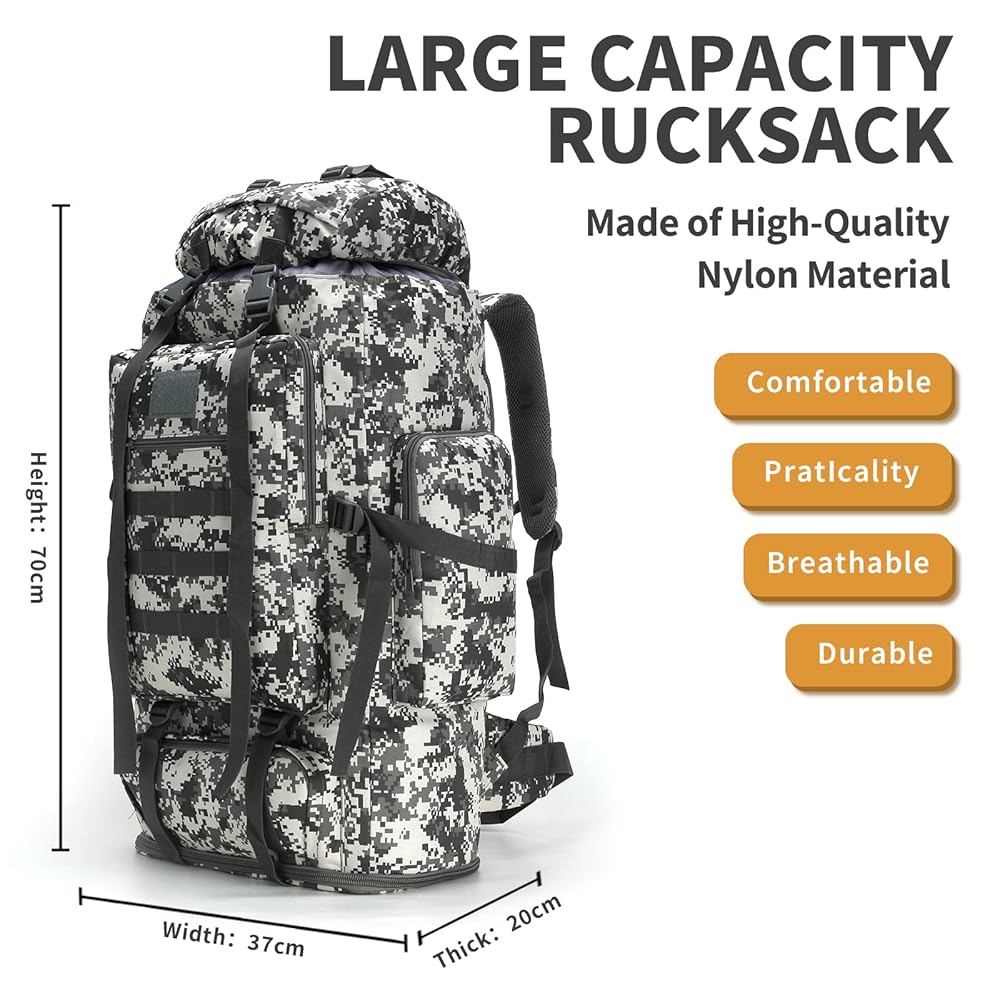Top 5 Features to Look for in a Hiking Backpack: Your Ultimate Buying Guide

Choosing the perfect hiking backpack can make or break your outdoor adventure. Whether you're planning a quick day hike or embarking on a multi-week expedition, the right backpack features can significantly impact your comfort, safety, and overall hiking experience. With countless options available in today's market, understanding which features truly matter will help you make an informed decision and invest in a pack that serves you well for years to come.
At Alpenglow Gear, we've helped thousands of hikers find their ideal hiking and camping packs, and through our experience, we've identified the five most crucial features that separate exceptional backpacks from mediocre ones. This comprehensive guide will walk you through each essential feature, explaining why it matters and how to evaluate it when shopping for your next hiking companion.
1. Suspension System and Frame Design: The Foundation of Comfort

The suspension system is arguably the most critical component of any hiking backpack, as it determines how the pack's weight is distributed across your body. A well-designed suspension system can make a heavy load feel manageable, while a poor system can turn even a light pack into an uncomfortable burden.
Internal vs. External Frames
Modern hiking backpacks typically feature internal frame systems, which consist of lightweight aluminum stays or carbon fiber rods integrated within the pack's back panel. These internal frames provide excellent load stability and allow the pack to move naturally with your body during dynamic activities like scrambling or crossing uneven terrain. Internal frame packs are ideal for most hiking scenarios and are featured prominently in our day packs and multi-day packs collections.
External frame packs, while less common today, still have their place for specific applications, particularly when carrying very heavy loads or oddly-shaped gear. These systems excel at load-bearing capacity and ventilation but sacrifice some mobility and versatility.
Load Transfer Components
The most effective suspension systems feature three key load transfer points: padded shoulder straps, a substantial hip belt, and a sternum strap. The hip belt is particularly crucial, as it should carry 80-90% of the pack's weight on your hips rather than your shoulders. Look for hip belts with generous padding and contouring that matches your body shape.
Quality shoulder straps should be well-padded, properly curved to follow your shoulder's natural shape, and feature load-lifter straps that help pull the pack's weight closer to your back. The sternum strap helps stabilize the shoulder straps and prevents them from sliding outward during movement.
Torso Length Adjustability
Many premium hiking backpacks offer adjustable torso lengths to accommodate different body types. This feature is especially important for expedition packs and larger multi-day packs, where proper fit becomes even more critical as load weights increase. Some packs feature on-the-fly adjustability, while others require simple modifications using included hardware.
2. Capacity and Organization: Optimizing Your Gear Storage

Selecting the right capacity depends entirely on your intended use, trip duration, and personal packing style. Understanding how backpack capacity is measured and organized will help you choose a pack that accommodates your gear without being unnecessarily large or restrictively small.
Volume Considerations by Trip Type
For day hiking, packs typically range from 20-35 liters, providing ample space for essentials like water, snacks, extra layers, and safety gear. Our day packs collection offers various capacity options to match different day hiking styles, from minimalist trail runners to photographers carrying additional equipment.
Multi-day backpacking trips generally require 40-70 liter packs, depending on trip length, season, and personal gear preferences. These multi-day packs provide the perfect balance between capacity and manageability for weekend camping trips and shorter backpacking adventures.
Extended expeditions and winter camping often demand 70+ liter capacities, found in our expedition packs category. These large-capacity packs accommodate bulky winter gear, extended food supplies, and specialized equipment for challenging environments.
Organizational Features
Modern hiking backpacks should offer multiple access points and organizational compartments to help you efficiently pack and access your gear. Top-loading access is traditional and secure, while front-panel access (like a suitcase) allows easier gear organization and retrieval. Many contemporary packs offer both options.
Internal organization features might include sleeping bag compartments, hydration sleeves, hip belt pockets, and removable top lids that convert to daypacks. External attachment points like ice axe loops, trekking pole attachments, and gear loops provide additional carrying options for specialized equipment.
For specific activities, specialized organization becomes crucial. Hydration packs feature dedicated hydration system compartments and routing, while ski and snowboard packs include diagonal ski carry systems and avalanche gear organization.
3. Material Quality and Durability: Built to Last

The materials used in backpack construction directly impact the pack's longevity, weather resistance, and overall performance. Understanding different fabric types, denier ratings, and construction methods will help you evaluate a pack's durability and suitability for your intended use.
Fabric Types and Denier Ratings
Most quality hiking backpacks use nylon or polyester fabrics, measured in denier (the weight of the fiber). Higher denier numbers indicate thicker, more durable fabrics, but also increased weight. For example, 210D nylon offers excellent durability for high-wear areas, while 70D nylon provides a good balance of weight and strength for pack bodies.
Ripstop fabrics feature reinforcement threads woven in a crosshatch pattern, preventing small tears from spreading into large rips. This construction is particularly valuable in lightweight packs where fabric weight is minimized.
Weather Resistance Considerations
While we'll cover this topic in detail in our upcoming blog "Waterproof vs. Water-Resistant Backpacks: What You Really Need," it's worth noting that material selection significantly impacts weather protection. Most hiking backpacks feature water-resistant treatments like DWR (Durable Water Repellent) coatings, which cause water to bead and roll off the fabric surface.
For enhanced weather protection, many hikers invest in pack accessories like rain covers or pack liners, which provide additional protection for sensitive gear during prolonged wet weather exposure.
Construction Quality Indicators
Examine stitching quality, zipper durability, and stress point reinforcement when evaluating backpack construction. Double or triple stitching at high-stress areas, YKK zippers, and bartacked reinforcements at critical connection points indicate quality construction that will withstand years of trail use.
4. Fit and Comfort: Your Personal Connection to the Pack
Even the most feature-rich backpack becomes useless if it doesn't fit your body properly. Comfort extends beyond initial impressions and encompasses how the pack performs during extended wear, various loading conditions, and different activity levels.
Proper Fit Assessment
A properly fitted hiking backpack should feel like a natural extension of your body rather than an external burden. The pack's weight should rest primarily on your hips, with minimal pressure on your shoulders. The hip belt should sit on your hip bones (iliac crest), not your waist, and the shoulder straps should curve naturally over your shoulders without creating pressure points.
Back panel design significantly impacts comfort and ventilation. Some packs feature contoured foam back panels that provide cushioning while maintaining airflow channels, while others use tensioned mesh systems that create space between your back and the pack for enhanced ventilation.
For detailed guidance on achieving optimal pack fit, be sure to read our comprehensive guide "How to Properly Fit and Adjust Your Backpack for Maximum Comfort," which provides step-by-step fitting instructions and troubleshooting tips for common fit issues.
Gender-Specific Design Considerations
Many manufacturers now offer women-specific pack designs that account for differences in torso length, shoulder width, and hip shape. These packs typically feature shorter torso lengths, narrower shoulder strap spacing, and contoured hip belts designed for female anatomy.
Additionally, kids packs require special attention to proper fit and capacity, as young hikers need packs scaled appropriately for their developing bodies and strength levels.
5. Specialized Features for Your Adventure Style
The final consideration involves evaluating specialized features that align with your specific hiking style and adventure preferences. These features can significantly enhance your outdoor experience when chosen thoughtfully.
Activity-Specific Adaptations
Different hiking styles benefit from specialized pack features. Trail runners and fast hikers often prefer minimalist lumbar packs or lightweight day packs with streamlined profiles and bounce-free designs. These packs prioritize weight savings and freedom of movement over maximum storage capacity.
Urban hikers and commuters benefit from urban bags and packs that blend outdoor functionality with city-appropriate styling. These packs often include laptop compartments, organizational features for daily essentials, and weather-resistant construction suitable for both trail and street use.
Hydration System Integration
Modern hiking demands efficient hydration, making hydration system compatibility a crucial feature for most hikers. Look for packs with dedicated hydration sleeves, internal routing for drink tubes, and clip systems for securing the drinking valve. While specialized hydration packs maximize this functionality, most quality hiking backpacks now include basic hydration compatibility.
Modular and Expandable Systems
Some advanced packs offer modular components that allow customization based on trip requirements. Removable top lids, detachable daypacks, and add-on pockets provide flexibility for varying trip lengths and gear requirements. These systems are particularly valuable for hikers who undertake diverse adventure types throughout the year.
Making Your Final Decision
Selecting the perfect hiking backpack requires balancing these five crucial features against your specific needs, budget, and adventure goals. Consider your typical hiking style, average trip length, and the importance of each feature to your outdoor experience.
Remember that the most expensive pack isn't necessarily the best choice for your needs. A well-fitted, appropriately sized pack from a reputable manufacturer will serve you better than a premium pack that doesn't match your body type or adventure style.
At Alpenglow Gear, our extensive hiking and camping packs collection represents the best options across all categories and price points. Whether you need a lightweight day pack for local trail exploration or a robust expedition pack for serious wilderness adventures, understanding these five essential features will guide you toward the perfect pack for your outdoor pursuits.
Take time to research, try on different options when possible, and don't hesitate to invest in quality gear that will enhance your hiking experiences for years to come. Your back—and your adventures—will thank you for choosing wisely.



